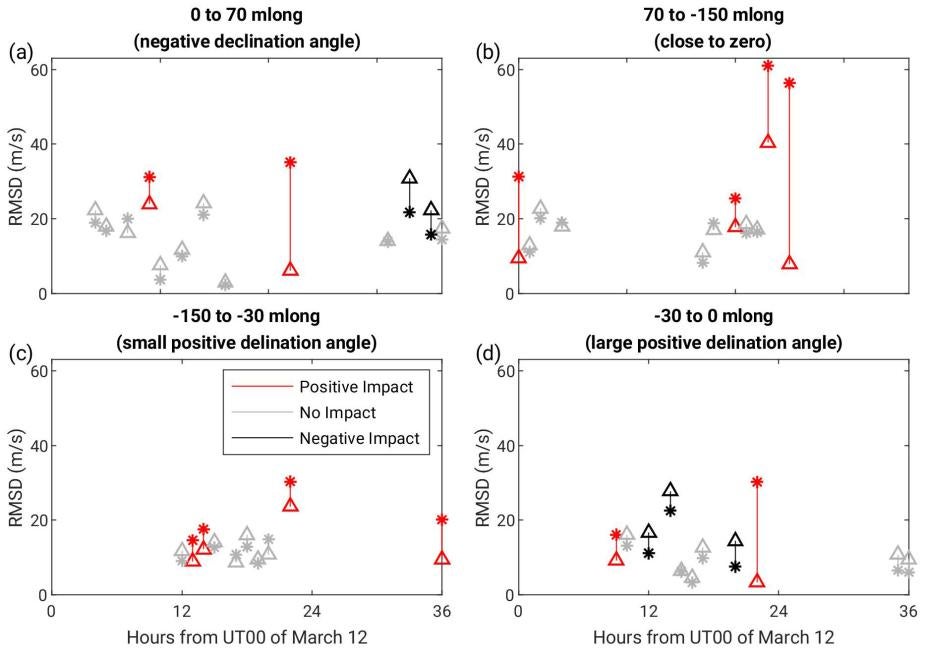Publication: JGR: Space Physics; First HAO Author: Chih-Ting Hsu; Authors as listed in article: Chih-Ting Hsu, Tomoko Matsuo, Astrid Maute, Russel Stoneback, and Chuan-Ping Lien
A Case Study During a Minor Storm Period Under Solar Minimum Conditions: The dayside equatorial ionospheric electrodynamics exhibits strong variability driven simultaneously by highly changeable external forcings that originate from the Sun, magnetosphere, and lower atmosphere. In this paper, to investigate this variability, a comprehensive data-driven ensemble modeling is carried out by using a coupled model of the thermosphere and ionosphere, with the focus on the $\mathbf{E \times B}$ drift variability, during a solar minimum and minor storm period.

Root-Mean-Square Difference of the plasma drift between C/NOFS data and FORMOSAT-3/COSMIC DART/TIE-GCM ensemble data assimilation computed separately for the four geomagnetic longitudinal sectors. The ensemble data assimilation result is shown by triangle marks, and the control experiment (ensemble simulation without assimilating any data) result is shown by asterisk marks. The TIE-GCM ensemble used in this in these is driven by MERRA-TIMEGCM and AMGeO. Generally, by updating neutral winds using FORMOSAT-3/COSMIC DART/TIE-GCM ensemble data assimilation and driven the model ensemble using MERRA and AMGeO, the specification of plasma drift can be improved.
The variability of $\mathbf{E \times B}$ drift in response to the changes and uncertainty of primary forcings (e.g., solar EUV, high-latitude plasma convection and auroral particle precipitation, and lower atmospheric wave forcing) is investigated by ensemble forcing sensitivity experiments that incorporate data-driven stochastic perturbations of these forcings into the model. Secondly, the impact of assimilating FORMsa SATellite-3/Constellation Observing System for Meteorology, Ionosphere and Climate (FORMOSAT-3/COSMIC) electron density profiles (EDPs) on the reduction of uncertainty of the modeled $\mathbf{E \times B}$ drift variability. The Communication and Navigation Outage Forecasting System (C/NOFS) ion drift velocity observations are used for validation, and the validation results support importance of the use of data-driven forcing perturbation methods in ensemble modeling and data assimilation experiments. The specific main findings are as follows. The solar EUV dominates the global-scale day-to-day variability, while the lower atmosphere wave forcing is critical to determining the regional day-to-day variability. Uncertainty of the modeled $\mathbf{E \times B}$ drift variability is affected considerably by the magnetospheric forcing specification methods. The ensemble data assimilation of FORMOSAT-3/COSMIC EDPs helps reduce the uncertainty and improve an agreement of the modeled $\mathbf{E \times B}$ drifts with C/NOFS observations.